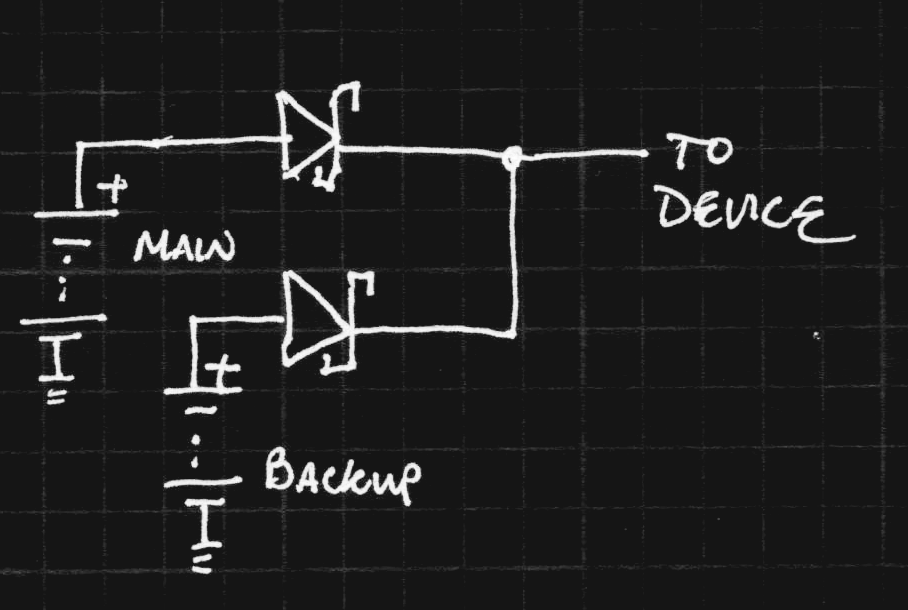For some applications, a backup power source will be desired for periods of low water use. An example might be an IoT frozen pipe sensor, which should continue to work even if you are not running the water often enough to charge the batteries.
I envision a power-switching circuit to cut over to a lithium primary battery during such periods of "power drought." The simplest way to accomplish this is with the use of two Schottky diodes:

The problem with this circuit is that the forward voltage drop of the diodes reduces the battery life. Although for very low current drains, this may be sufficient, for any application which requires periodic high pulse currents, the forward voltage drop becomes a limiting factor. Additionally, the reverse leakage of Schottky diodes can be relatively large, causing unnecessary power drain.
A more efficient solution can be constructed with any number of commercial "smart diodes" or power-ORing ICs developed specifically for this purpose. These devices use a comparator to determine which input voltage to use, and switch MOSFETs to efficiently select the appropriate supply. Although these devices can be more efficient than a simple diode-based solution, the added efficiency comes with added cost and complexity.
I'm currently surveying the offerings from various manufacturers to determine if any of them are suitable for this power supply module. It may be that the module can be designed to accept either a simple diode-based switch or a more sophisticated IC-based solution for different end uses.
At this point, I haven't ruled out the possibility of designing my own ideal diode controller for power switching. Although a circuit constructed from individual comparators and MOSFETs probably couldn't compete with commercial offerings on price, comparators and other components may come for free as peripherals on a microcontroller. In this case, a home-brewed solution might make sense.
 Ted Yapo
Ted Yapo
Discussions
Become a Hackaday.io Member
Create an account to leave a comment. Already have an account? Log In.